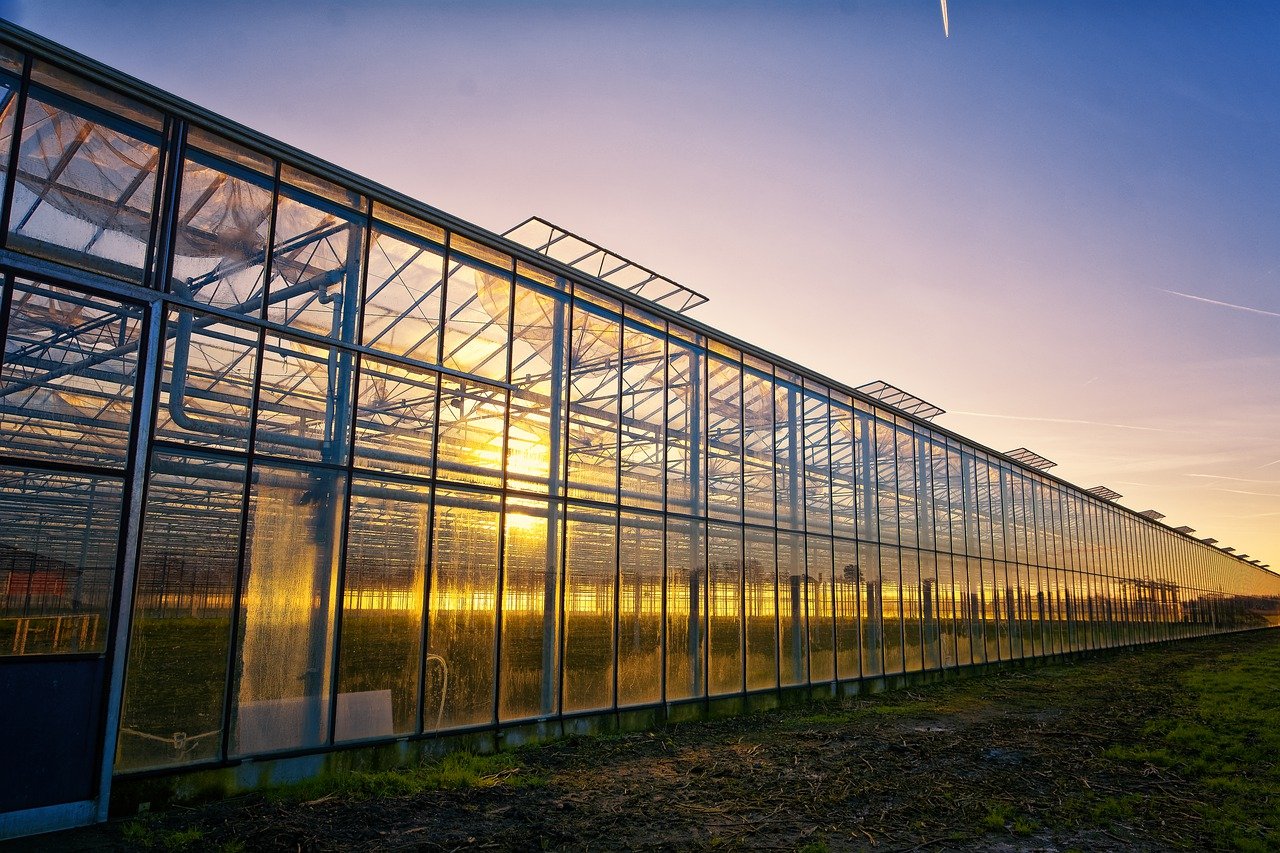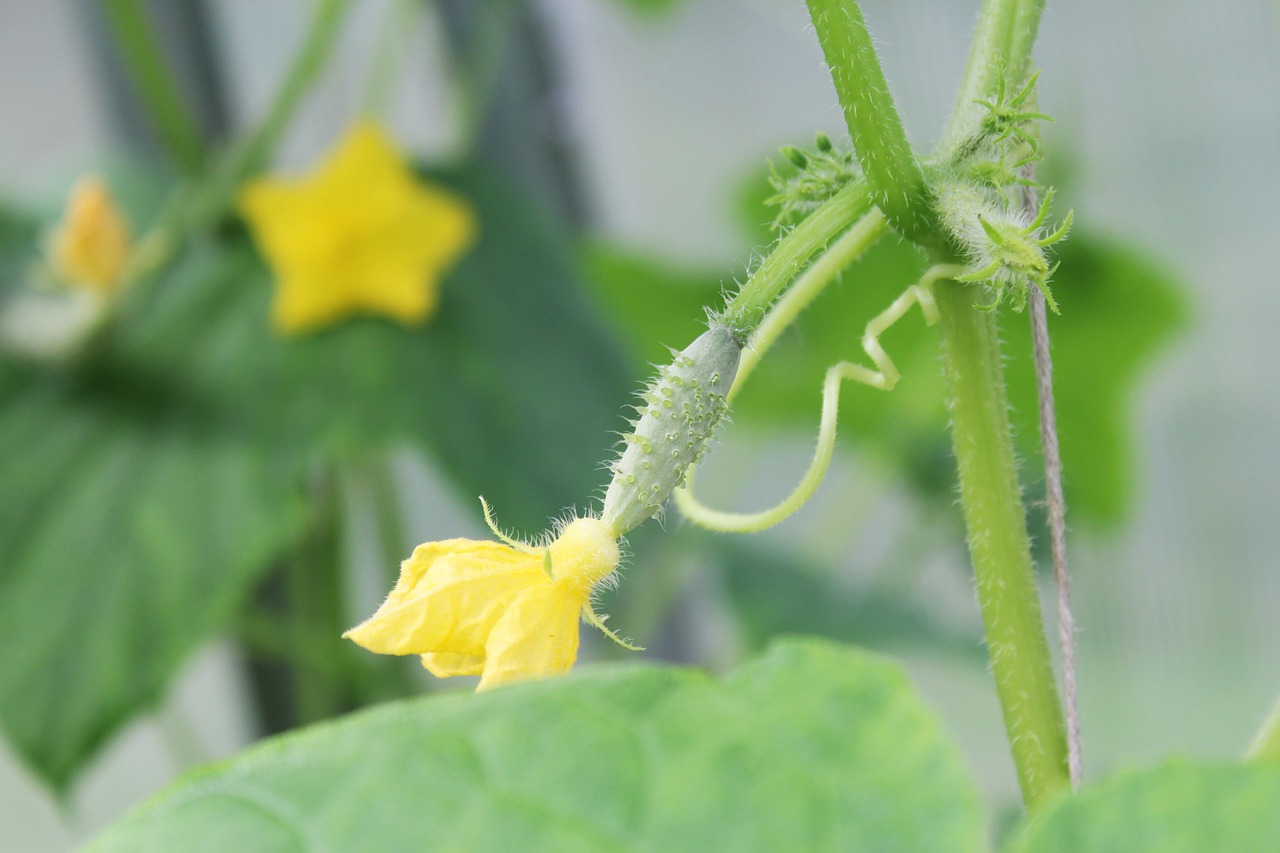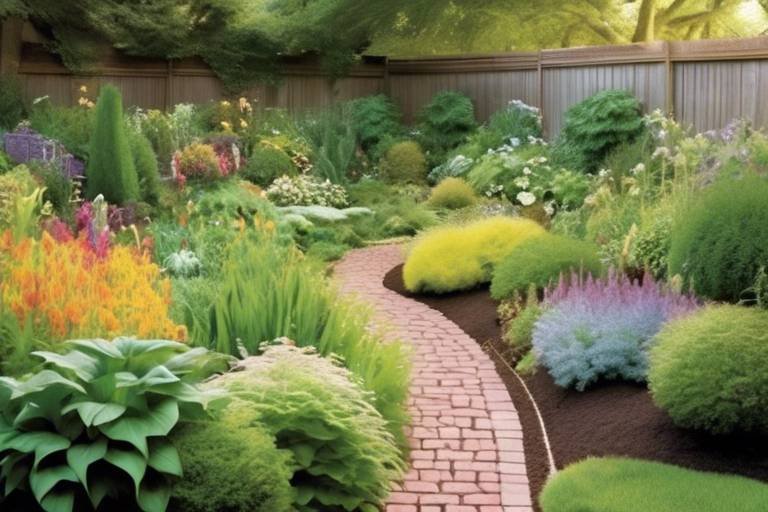DIY Backyard Greenhouses - A Beginner’s Guide
Are you a gardening enthusiast looking to take your passion to the next level? Building a backyard greenhouse might just be the perfect project for you! In this beginner's guide, we will walk you through the essential steps and tips to set up your very own greenhouse right in your backyard. Get ready to extend your growing season and create a thriving garden oasis all year round!

Benefits of Backyard Greenhouses
When it comes to backyard greenhouses, the benefits are truly abundant. Imagine being able to extend your growing season, cultivate a wider variety of plants, and protect your precious greens from pesky pests—all within the confines of your own backyard sanctuary. The beauty of having a greenhouse is that it provides a controlled environment where you can nurture your plants with care and precision, ensuring optimal growth and harvest all year round.
One of the key advantages of having a backyard greenhouse is the ability to extend your growing season beyond the limitations of outdoor gardening. With a greenhouse, you can start planting earlier in the spring and continue harvesting well into the fall, giving you a longer window of opportunity to enjoy fresh produce from your own garden. This extended season not only allows you to experiment with different plant varieties but also ensures a more consistent and bountiful harvest throughout the year.
Furthermore, a greenhouse provides a shield of protection against common garden pests and harsh weather conditions. By creating a barrier between your plants and the outside world, you can effectively ward off pests like insects and rodents that may otherwise damage your crops. Additionally, a greenhouse offers a safe haven for your plants during extreme weather events such as heavy rains, strong winds, or frost, ensuring their survival and well-being in a secure environment.
Another significant benefit of backyard greenhouses is the versatility they offer in terms of plant selection. With a greenhouse, you have the freedom to grow a wide range of plants that may not thrive in your local climate or soil conditions. Whether you're interested in cultivating exotic flowers, tropical fruits, or delicate herbs, a greenhouse provides the ideal setting to create a diverse and thriving garden that reflects your botanical preferences and gardening aspirations.
In essence, backyard greenhouses open up a world of possibilities for gardening enthusiasts, offering a sanctuary where plants can flourish, seasons can be extended, and creativity can bloom. By harnessing the benefits of a greenhouse, you can transform your backyard into a vibrant oasis of greenery and growth, where every seed planted has the potential to blossom into a beautiful and fruitful harvest.

Choosing the Right Location
When it comes to setting up your backyard greenhouse, choosing the right location is crucial for the success of your gardening endeavors. The ideal spot for your greenhouse should meet certain criteria to ensure optimal plant growth and convenience in maintenance.
First and foremost, consider the sunlight exposure in the area where you plan to place your greenhouse. Plants require adequate sunlight to thrive, so select a location that receives ample sunlight throughout the day. Avoid areas that are shaded by buildings or trees that could obstruct the sunlight.
Additionally, easy access to water is essential for watering your plants efficiently. Choose a location that allows you to easily connect a water source to your greenhouse, whether it's through a hose or a nearby water outlet. This will make watering your plants a hassle-free task.
Proximity to your home is another factor to consider when choosing the right location for your greenhouse. Having your greenhouse close to your house can make it more convenient for you to monitor and tend to your plants regularly. It also allows for easy access to tools and supplies when needed.
Furthermore, think about the surrounding environment and potential risks. Avoid low-lying areas that may be prone to flooding or areas with strong winds that could damage your greenhouse structure. Select a location that offers protection from harsh weather conditions to ensure the longevity of your greenhouse.
By carefully considering these factors, you can select the perfect location for your backyard greenhouse that promotes healthy plant growth and provides a convenient and enjoyable gardening experience.

Materials Needed for Construction
When it comes to constructing your backyard greenhouse, it's essential to gather the right materials to ensure a sturdy and functional structure. The materials you choose will play a crucial role in the durability and effectiveness of your greenhouse. From the frame to the covering and ventilation systems, each component contributes to creating an optimal environment for your plants to thrive.
One of the primary materials you'll need is a sturdy frame to provide the structure and support for your greenhouse. Common options include wood, aluminum, or PVC, each with its own advantages in terms of cost, durability, and ease of assembly. The frame serves as the backbone of your greenhouse, so it's important to choose a material that suits your needs and budget.
For covering materials, you have several options to choose from, such as glass, polycarbonate panels, or plastic film. The covering plays a vital role in regulating temperature and protecting your plants from external elements. Consider factors like insulation, light transmission, and durability when selecting the covering material for your greenhouse.
Proper ventilation is essential for maintaining a healthy growing environment inside your greenhouse. Ventilation systems, such as vents, fans, and louvers, help regulate temperature and humidity levels, preventing issues like mold and fungal growth. Adequate airflow is crucial for plant health and overall greenhouse performance.
Additionally, shelving and benches are essential for organizing your plants and maximizing space inside the greenhouse. Consider the layout of your greenhouse and the types of plants you plan to grow when selecting shelving options. Adjustable shelves allow for flexibility in accommodating plants of different sizes and heights.
When it comes to constructing your backyard greenhouse, investing in quality materials will pay off in the long run. By selecting the right frame, covering, ventilation systems, and shelving, you can create a functional and efficient space for growing a wide variety of plants year-round.

Building Your Greenhouse
When it comes to building your greenhouse, the first step is to prepare the site properly. Choose a level area in your backyard that receives ample sunlight throughout the day. Ensure that the location is easily accessible for watering and maintenance, as well as close to a water source for convenience. Proper site preparation is crucial for the overall success of your greenhouse.
Next, you will need to assemble the frame of your greenhouse. The frame provides the structure and support for the entire greenhouse, so it's essential to choose durable materials such as PVC, wood, or metal. Consider the size and design of your greenhouse when selecting the frame materials to ensure stability and longevity.
Once the frame is in place, it's time to install the covering materials. Common options include glass, polycarbonate panels, or plastic sheeting. Each material has its own advantages and disadvantages, so choose one that suits your climate and budget. The covering will help regulate temperature and protect your plants from external elements.
Doors and windows are essential components of your greenhouse to provide ventilation and access. Install them strategically to allow for proper airflow and easy entry. Consider adding adjustable vents or louvers to control the temperature and humidity levels inside the greenhouse effectively.
Shelving and storage are also crucial for organizing your plants and gardening tools. Utilize sturdy shelves or tables to maximize space and create an efficient layout. Proper shelving will help you make the most of your greenhouse space and keep your plants healthy and well-organized.
Lastly, consider adding additional features such as a water irrigation system, heating or cooling devices, and shading options to enhance the functionality of your greenhouse. These extras can help you create a more controlled environment for your plants and extend the growing season year-round.

Managing Temperature and Humidity
Managing temperature and humidity levels inside your backyard greenhouse is crucial for creating an optimal growing environment for your plants. Proper regulation of these factors can make a significant difference in the success of your gardening endeavors. One effective method to control temperature is by installing a ventilation system that allows for air circulation and prevents overheating, especially during hot summer days. Additionally, shading your greenhouse with a shade cloth can help reduce excessive sunlight exposure and maintain a comfortable temperature for your plants.
Humidity management is equally important, as it can impact plant growth and susceptibility to diseases. To maintain adequate humidity levels, consider using a humidifier or misting system to increase moisture in the air, especially in dry climates. Conversely, if humidity levels are too high, a dehumidifier can help prevent mold and mildew growth. Monitoring the temperature and humidity regularly with a digital thermometer and hygrometer is essential for making adjustments as needed to create an ideal environment for your plants.

Choosing the Right Plants
When it comes to choosing the right plants for your backyard greenhouse, several factors come into play to ensure a successful and thriving garden. Consider the climate of your region, the available space inside the greenhouse, and your personal preferences when selecting the plants to cultivate.
One essential aspect to keep in mind is the compatibility of the plants with the environment you can create in your greenhouse. Some plants require specific temperature and humidity levels to flourish, so it's crucial to choose varieties that align with the conditions you can maintain.
Additionally, think about the purpose of your greenhouse. Are you looking to grow vegetables, flowers, or a combination of both? Tailoring your plant selection to your gardening goals will help you create a diverse and fulfilling greenhouse experience.
Consider the growth habits and space requirements of the plants you intend to grow. Some plants may need trellises or support structures, while others may spread out and require ample room to thrive. Planning ahead and understanding the growth patterns of your chosen plants will help you maximize the available space in your greenhouse.
Furthermore, think about the maintenance needs of the plants you select. Some varieties may require more frequent watering, fertilizing, or pruning than others. Choose plants that align with the amount of time and effort you can dedicate to greenhouse maintenance to ensure a successful growing experience.
Lastly, don't be afraid to experiment and try new plant varieties in your greenhouse. Gardening is a rewarding journey of discovery, and exploring different plants can lead to exciting results. Mix and match different species to create a vibrant and dynamic greenhouse garden that reflects your unique gardening style.

Greenhouse Maintenance Tips
Keeping your greenhouse in top condition is crucial for successful gardening year-round. Regular maintenance tasks can ensure a healthy environment for your plants to thrive. One essential tip is to regularly clean both the interior and exterior of your greenhouse to remove dirt, dust, and debris that can block sunlight and hinder plant growth. Additionally, inspecting for any signs of pests or diseases is vital to address issues promptly and prevent them from spreading.
Proper watering techniques are key to greenhouse maintenance. Monitor the moisture levels of the soil to avoid overwatering or underwatering your plants. Consider investing in a watering system that can provide consistent moisture to your plants, especially during hot and dry periods. Furthermore, maintaining proper ventilation is crucial to prevent the buildup of humidity, which can lead to mold and mildew growth. Install vents or fans to regulate airflow and keep the greenhouse environment well-ventilated.
Regularly check and maintain your greenhouse equipment, such as heaters, cooling systems, and lighting fixtures, to ensure they are functioning efficiently. Replace any worn-out parts or components to avoid disruptions to your plant growth. Additionally, inspect the structural integrity of your greenhouse, including the frame, covering, and doors, to address any damages or wear and tear promptly.
Implementing a pest control strategy is essential for greenhouse maintenance. Monitor for common pests like aphids, mites, and whiteflies, and take proactive measures to prevent infestations. Consider using natural predators or organic pesticides to control pest populations without harming your plants. Lastly, make seasonal adjustments to your greenhouse, such as adding insulation during winter or shading during summer, to create an optimal growing environment for your plants.

Expanding Your Greenhouse Skills
So, you've successfully set up your backyard greenhouse and have been enjoying the benefits of growing your own plants in a controlled environment. But why stop there? Let's dive into expanding your greenhouse skills to take your gardening game to the next level!
One way to enhance your greenhouse skills is by experimenting with new plant varieties. Consider trying out different species or cultivars that you haven't grown before. This not only adds diversity to your garden but also allows you to learn more about various plants and their growing requirements.
Another way to expand your greenhouse skills is by incorporating sustainable practices into your gardening routine. This could involve using organic fertilizers, practicing water conservation techniques, or even setting up a composting system within your greenhouse. By adopting eco-friendly practices, you not only contribute to a healthier environment but also improve the overall sustainability of your gardening efforts.
Additionally, consider exploring advanced techniques such as hydroponics or aquaponics in your greenhouse. These soil-less growing methods can significantly increase your plant yield and allow you to grow crops in a more efficient and controlled manner. By delving into these innovative techniques, you can push the boundaries of traditional gardening and achieve impressive results.
Furthermore, don't be afraid to get creative with your greenhouse design and layout. Experiment with different shelving arrangements, hanging planters, or vertical gardening systems to maximize your growing space. By thinking outside the box and customizing your greenhouse setup, you can create a unique and personalized gardening environment that suits your preferences and needs.
Remember, expanding your greenhouse skills is all about continuous learning and experimentation. Stay curious, be open to new ideas, and don't be afraid to make mistakes along the way. Gardening is a journey of discovery, and by expanding your greenhouse skills, you'll unlock a world of possibilities for growing and nurturing your plants.
Frequently Asked Questions
- Can I build a greenhouse in a small backyard?
Yes, you can construct a greenhouse in a small backyard by opting for a compact design and utilizing vertical space efficiently. Consider using tiered shelving and hanging baskets to maximize plant capacity while minimizing the footprint.
- What is the best covering material for a greenhouse?
The best covering material for a greenhouse depends on factors like climate, durability, and light transmission. Common options include polycarbonate panels, glass, and polyethylene film. Choose a covering that suits your specific needs and budget.
- How do I control pests in my greenhouse?
To control pests in your greenhouse, implement preventive measures like regularly cleaning the space, using natural predators, and practicing good plant hygiene. Additionally, you can use organic pesticides or traps as needed to manage pest infestations.
- What are the benefits of proper ventilation in a greenhouse?
Proper ventilation in a greenhouse is crucial for regulating temperature, humidity, and air circulation. It helps prevent mold growth, disease spread, and excessive heat buildup, creating a healthier environment for plant growth and productivity.
- How can I maintain the ideal temperature in my greenhouse?
You can maintain the ideal temperature in your greenhouse by using thermostats, heaters, fans, and shading systems. Monitoring temperature fluctuations regularly and adjusting your climate control measures accordingly will help create a stable and optimal growing environment.



















